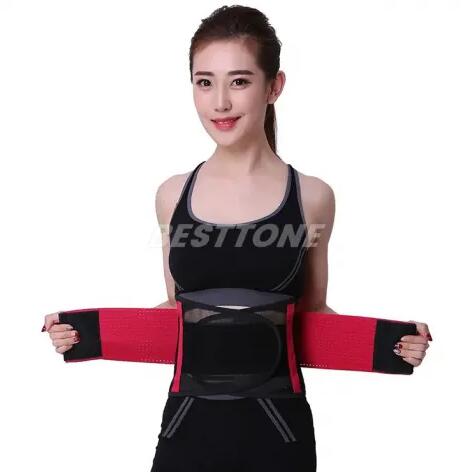6 Back Supports: Benefits, Risks and Options
Back braces are popular wearable supports that are said to relieve pain and improve people's posture. A person may choose to wear a back brace for a variety of reasons, including to prevent work-related injuries or to manage conditions such as scoliosis.
Back braces are popular wearable supports that are said to relieve pain and improve people's posture. A person may choose to wear a back brace for a variety of reasons, including to prevent work-related injuries or to manage conditions such as scoliosis. However, most people should not use a back brace unless recommended by their doctor.
What is a back brace?
A back brace is a device that people can Click here for more.. Some people believe they can reduce back pain, prevent injury, promote recovery, and encourage proper posture and proper spinal alignment.
Back braces usually have elastic compression straps and rigid plastic or metal, or a combination of both. They come in custom or pre-made designs. Prefabricated or "off-the-shelf" types are readily available and do not require assembly and molding.

Sports breathable elastic waist brace
When does a person need one?
An individual may need a back brace for the following reasons.
â— Spinal stabilization after trauma or injury
â— Correction of postural problems
â— For work activities or lifestyles that increase the risk of back strain or injury
A doctor or medical professional can advise on the use of a safe or beneficial method.
Uses
Immobilizing the spine through bracing is beneficial after surgery. It allows structures to heal, maintains proper alignment, and reduces spinal compression.
It may also be helpful for people with back conditions such as
â— Osteoarthritis of the spine
â— Herniated discs
â— Stenosis
â— Spondylolisthesis
â— Spinal slippage
These devices help limit micro-movements of the spine to reduce slippage and stress, relieving pain and making daily movement tolerable.
Are they covered by health insurance?
Yes. Medicare, Medicaid and private insurance companies cover medically necessary back braces. These devices fall into the durable medical equipment (DME) category.
In order to be eligible for coverage, an individual must have a prescription from a physician who has been approved by the insurance provider. The equipment should also meet the following DME criteria.
â— Durable
â— Medically necessary
â— Household
â— Not useful for people who are not sick or injured
â— Have a life expectancy of at least 3 years
How they work to provide support and help with posture
Back supports unload weight from the back and transfer it to the abdomen, thus reducing the load on the spinal structures. The reduced pressure decreases muscle tone, which is a protective response to back injuries and trauma, and the pain that usually accompanies them.
The back brace also provides proprioceptive input to encourage postural correction and the use of proper body mechanics. One study showed that wearing a brace for 3 weeks may improve a person's proprioception, although the study only lasted 3 weeks and the participants had no back pain.
Are there risks?
Most people do not need to wear a back brace and should only do so under the supervision of a physician.
Wearing a back brace can prevent people from using their core muscles to support their body.
Health care professionals usually recommend short-term use of braces. Prolonged use may lead to dependence on the device, which can lead to muscle weakness and atrophy.
How to choose
It is best to follow the advice of your doctor or physical therapist when choosing the style, material and type of back brace.
Level of support
Back braces can be rigid, semi-rigid or flexible. Rigid types provide stability for people who suffer from moderate to severe pain and instability, such as fractures or health problems after a traumatic accident.
The flexible type consists of softer materials to limit excessive motion and provide compression while offering more freedom and flexibility.
Semi-rigid braces combine the two and feature a flexible brace for the body and a rigid panel surrounding the device.
Sizing and Fit
Most off-the-shelf products are available in universal sizes with adjustable belt wings or hook-and-eye locks to ensure a comfortable fit. Others are customized to fit the human body.
Materials
Flexible braces usually consist of cotton, canvas or neoprene, while rigid braces can consist of metal, leather or moldable plastic. Sports enthusiasts' belts usually retain heat to produce sweat.
Durability and maintenance
Machine washable braces are easier to maintain. Braces with Velcro may wear out more quickly, while elastic types may stretch after regular use.
